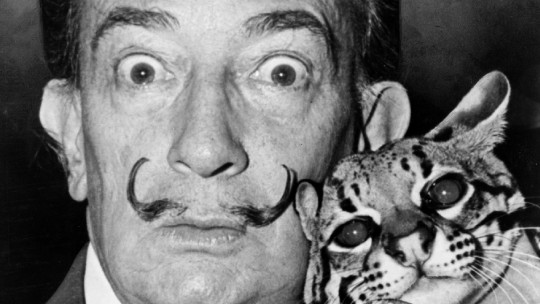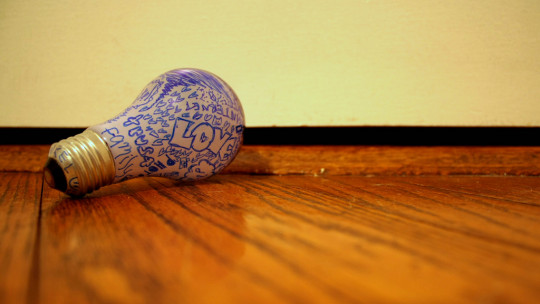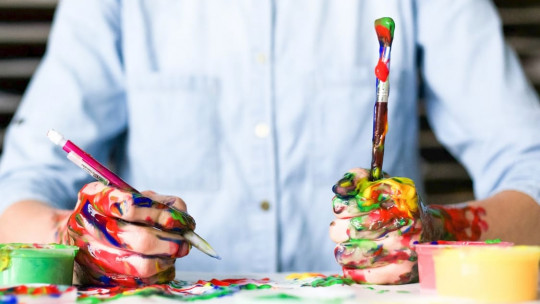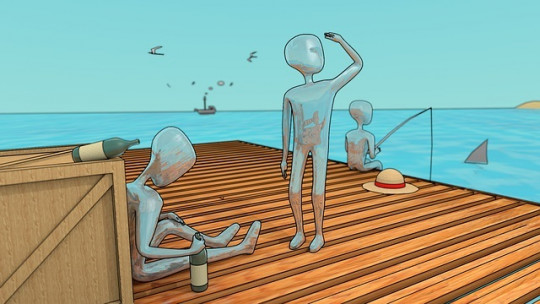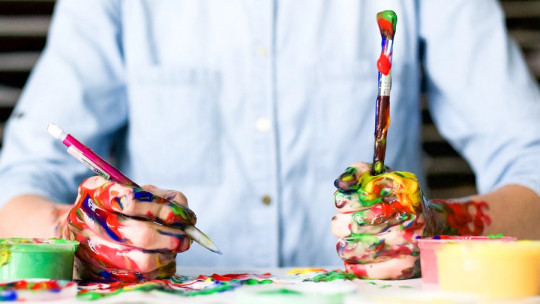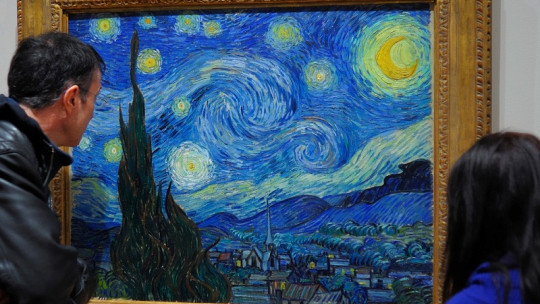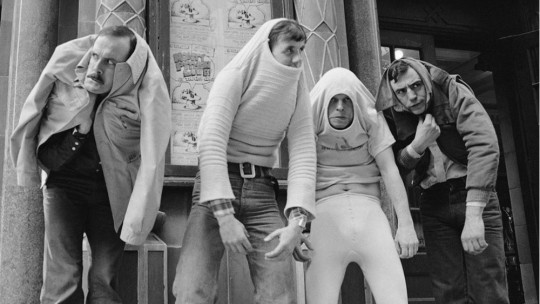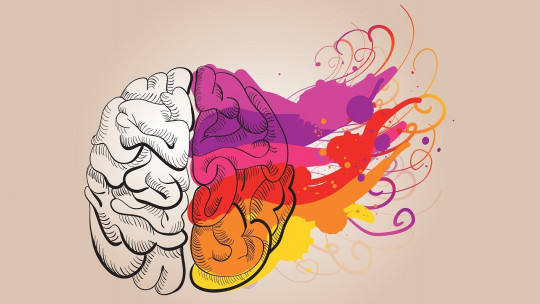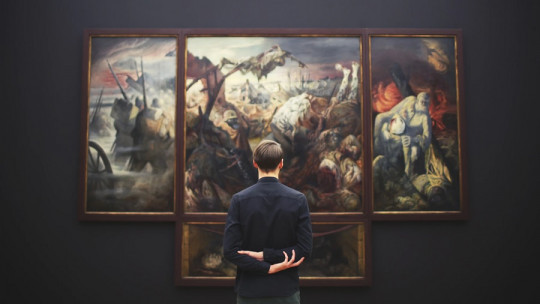
Creativity is understood as the ability to create something new, whether in the form of ideas, objects, art, political ideologies, and much more.
Creative thinking is something that is generally seen as something positive and a gift for those who have it highly developed, however, there are many ways in which it can be hindered.
There are many barriers to creativity, which means that original ideas never come to light. Below are the 15 most common and some ways to deal with them.
Creativity is a valuable skill that fuels innovation and problem-solving. However, numerous barriers can stifle creativity, preventing individuals and organizations from reaching their full potential. Understanding these barriers is crucial for overcoming them and fostering a more creative environment. This article explores common obstacles to creativity, their impacts, and strategies to overcome them.
Understanding Creativity
Creativity involves generating new and original ideas, solutions, or artistic expressions. It’s the ability to think outside the box and see connections that others might miss. While everyone has the potential to be creative, various barriers can hinder this ability.
The 15 barriers to creativity
There are many ways to obstruct creative thinking or prevent something new from being brought from the world of imagination to the real world, however, the following 15 ways are the most common to prevent or hinder the creative process from happening.
1. Lack of time
Like all things in this world, the creative process takes time
First you have to have a moment of calm in which you can get your mind going, then you have to take your time to shape the idea, make its improvements and discard its possible defects and, then, materialize it. For example, if we want to paint a painting, first we will need to think about what we want to do, then, more carefully, we will make a sketch of what we want to paint, in this case, an autumn landscape.
Then we paint, making the elements of the painting and, while we paint, we will also have new ideas and improvise some aspects of the painting.
2. Lack of self-esteem
Lack of self-esteem is often the main factor that kills creativity. It may happen that you are very original and have very good ideas, but This is never materialized because they are believed to be bad ideas
Whether you have already had ideas or not, what you have to do is let your imagination flow, waiting for people to judge the ideas for what they are, not for who made them.
3. Everything is invented
Many people, when trying something new, become discouraged because they come to the conclusion that everything has already been invented. It is true that there are as many ideas as there are stars in the sky, but This does not mean that none of them can be improved
Sometimes a small modification can make a significant difference between the new and the old. There is always something that can be reformulated or improved.
4. Fear of failure
Nobody likes to be wrong, but the truth is that If you don’t try it yourself, failure is assured
Trying to do new and different things is always a risk, since there are no guarantees that people will understand our vision of the world or that the idea that we originally saw as very innovative will turn out to be somewhat unconvincing.
If we think about it in depth, What risk is there in trying something new and it not working in the end? If it works, then great, but if not, we still benefit from learning a valuable lesson that will help us try other options.
One message from this point should be clear: every creative process is risky, because there is a certain uncertainty. If there was no such uncertainty, that is, if the results were already known, what would be new to offer the world?
5. Perfectionism
We can always improve what we have done but, sometimes, trying to make what we have done perfect can ruin a good idea and also waste our time. Perfection is, on many occasions, the enemy of good
6. Inability to self-criticize
In the same way that you should not be afraid of failure, you should be critical of what you do. The assumption that what has been created is undoubtedly good and that others are wrong It is a great limit to creativity.
First, because there is no motivation to have new ideas, and second, because you may be defending an idea that is not seen as something creative, either because it has already been done before or because it is simply bad.
Defects in what has been done must be detected and, based on them, what has been done must be reformulated. This activates the creative process, since We try to constantly improve ourselves, promoting divergent thinking
7. Rigid rules
Rules are fundamental for life in society, in addition to serving to comfort us by knowing that there is a code of conduct and laws that guarantee our rights and obligations. They generate a safe zone.
However, there are other types of rules, which vary from individual to individual, and which can greatly limit our actions, especially when they are related to something new. They are the rules not given.
Terms of rigid beliefs and automatic behaviors can be defined that, to change them, some effort is necessary. An example of this would be always taking the subway to work, always wearing the same type of clothes, not trying vegan food…
Rules not given can affect all aspects of the person and, although it is not pathological in itself, it greatly limits being original. Creativity arises when these unwritten rules are broken.
But breaking them is not so easy, because they are invisible That is, they are automated behaviors that are done unconsciously. To break them, it is first necessary to consider why we do things the way they are doing them.
8. Stick to the first idea that appears
It usually happens that, if a good idea is found or it happens that the first thing that was thought of ended up being successful, then no need to change it and try new things
It is okay to take that first idea into account, but you should not ignore the possible improvements it requires or other options for doing things that can be much more beneficial than the original idea.
You should always aspire for more, never stay stuck in the same place, no matter how good results you have obtained.
9. Difficulty isolating
This barrier to creativity prevents the appearance of lateral thinking, and could be translated into worldly language with the expression ‘a tree does not let us see the forest’.
Not being able to isolate a specific problem from the rest or from the context in which it was formulated can be an aspect that makes the search for new alternatives difficult.
People tend to classify things into categories giving them an order that, by default, we can hardly change.
If you want to be creative you should try to separate the elements to be able to give them a new organization or relate them to other aspects that, normally, no relationship would be found.
10. The obvious is the obvious
Normally, people simplify reality and do not ask ourselves certain questions There are aspects of our daily lives that have always been lived in a specific way, so doubting them is unthinkable.
However, it must be understood that what is understood as the obvious is, in truth, a social construct. Each thing has been assigned a function, but this does not mean that it cannot be given other uses.
Although not questioning the obvious things in life may indicate having a normal, healthy mind, with a well-organized thinking style, it may also imply some creative limitation.
For example, an old chair can be seen as something that was used to sit on but is no longer useful, or, with a little imagination, it can be converted with a couple of ropes and a cushion into a comfortable and fun swing.
If you want to be creative, you shouldn’t take things for granted Everything supports a new function.
11. Difficulty relating remote ideas
Creativity lies in finding previously unseen relationships of two or more concepts. That is why it is very important to understand that two aspects that may apparently seem very unrelated can be exploited in such a way that they result in a totally transgressive idea.
It is normal that we try to associate two aspects that are closely related at first glance, but An effort must be made and try to go a little further, acquiring a more holistic vision of reality
Going further afield can be a very good way to avoid blockages, given that you have a greater number of creative possibilities.
12. Lack of motivation
The lack of motivation and will to carry out something new is a great enemy of creativity. There are people who have a great mind, which generates great ideas but, Due to the laziness of those who have it, they never materialize
Furthermore, if we do not have curiosity and interest in the world around us, where are the questions going to come from that will make us question the pre-established reality?
To be creative you must have great conviction, doubt everything and draw strength from wherever you can to offer the world a new way of doing things.
13. Paralysis by analysis
When it comes to being original, it is always advisable to try to see what has been done before, to see how it can be improved and avoid repeating something that has already been created.
However, sometimes this search becomes too extensive, oversaturating the creative genius, finding himself bombarded with hundreds of ideas, each one more original than the last.
When trying to get things out of them, the mind is blocked by making a great effort to select and analyze it, giving rise to creative paralysis
The best way to avoid this is to select specific sources of information and forget about the rest. It is true that there will be the unlikely risk of being able to repeat an idea already made, however the creative process will begin.
14. Envy
Many people feel jealous of those who show different, innovative and clearly creative thinking. Thus, through certainly toxic behavior, They can make us not feel bad for having believed that we could be different
Envy can be very evil, throwing all our most original ideas to the ground. This is why, to avoid it, we must be convinced of our vision of the world and try to materialize it.
15. Consumerism
It may seem a bit far-fetched, but the truth is that The population’s consumption trends have defined what is understood as a good idea and a bad one
This forces companies and their employees to work within certain limits, without allowing themselves to go outside the lines or else they are risking too much.
Productivity takes precedence over any factor, which can place a great burden of stress on workers, who see that they do not have the freedom to express themselves. In turn, they look fatigued, which also inhibits creative thinking.
Common Barriers to Creativity
Several common barriers can impede creative thinking. Recognizing these obstacles is the first step towards overcoming them.
Fear of Failure
Fear of failure is one of the most significant barriers to creativity. When individuals worry about making mistakes or facing criticism, they may avoid taking risks or trying new ideas.
Lack of Confidence
A lack of confidence can prevent people from expressing their creative ideas. Self-doubt and insecurity can lead to hesitation and reluctance to share or develop innovative concepts.
Perfectionism
Perfectionism can stifle creativity by creating unrealistic standards and excessive self-criticism. When individuals focus on making everything perfect, they may become paralyzed and unable to move forward with their ideas.
Rigid Thinking
Rigid thinking, or the inability to think flexibly, limits creative problem-solving. Sticking to traditional methods and being resistant to change can prevent the exploration of new and innovative solutions.
Environmental Constraints
Environmental constraints, such as a lack of resources or a restrictive work environment, can hinder creativity. Physical spaces that do not inspire creativity or limited access to tools and materials can be significant obstacles.
Time Pressure
Time pressure can negatively impact creativity. When individuals feel rushed or under tight deadlines, they may struggle to think creatively and produce their best work.
Negative Feedback
Negative feedback can discourage creative expression. Harsh criticism or lack of support can lead individuals to doubt their abilities and shy away from presenting new ideas.
Stress and Fatigue
High levels of stress and fatigue can impair cognitive function and reduce the ability to think creatively. A stressed or tired mind is less likely to engage in the creative process effectively.
Social and Cultural Barriers
Social and cultural norms can influence creative thinking. Societal expectations, cultural biases, and stereotypes can limit the acceptance and development of new ideas.
Lack of Motivation
A lack of motivation can stifle creativity. When individuals are not passionate or interested in the task at hand, they may struggle to generate innovative ideas or solutions.
The Impact of Creativity Barriers
Understanding the impact of these barriers can help highlight the importance of addressing them effectively.
Stagnation
Creativity barriers can lead to stagnation, where individuals or organizations fail to innovate and evolve. This can result in a lack of growth and missed opportunities.
Reduced Problem-Solving Ability
Creativity is essential for effective problem-solving. Barriers to creative thinking can limit the ability to develop innovative solutions to challenges, affecting both personal and professional success.
Decreased Job Satisfaction
In the workplace, creativity barriers can lead to decreased job satisfaction. When employees feel unable to express their ideas or contribute creatively, it can result in lower morale and engagement.
Inhibited Personal Growth
Personal growth is closely linked to creativity. Overcoming barriers to creative thinking can lead to greater self-awareness, confidence, and the development of new skills and perspectives.
Strategies to Overcome Creativity Barriers
Several strategies can help overcome barriers to creativity, fostering a more innovative and dynamic environment.
Encouraging Risk-Taking
Embracing Mistakes
Encourage a culture that embraces mistakes as learning opportunities. Viewing failures as valuable experiences can reduce the fear of failure and promote risk-taking.
Celebrating Creativity
Celebrate creative efforts and ideas, regardless of the outcome. Recognizing and rewarding creativity can boost confidence and motivation.
Building Confidence
Providing Supportive Feedback
Offer constructive and supportive feedback to build confidence. Positive reinforcement can help individuals feel more secure in their creative abilities.
Encouraging Self-Expression
Create an environment where self-expression is encouraged and valued. Allowing individuals to share their ideas without judgment fosters a more creative atmosphere.
Reducing Perfectionism
Setting Realistic Goals
Set realistic and achievable goals to reduce the pressure of perfectionism. Break projects into manageable tasks to make the creative process more approachable.
Focusing on Progress
Shift the focus from perfection to progress. Emphasize the importance of continuous improvement and celebrate small successes along the way.
Promoting Flexible Thinking
Encouraging Brainstorming
Encourage brainstorming sessions to generate a wide range of ideas. Create a safe space where all suggestions are welcomed and considered.
Exploring New Perspectives
Promote the exploration of new perspectives and approaches. Encourage individuals to step outside their comfort zones and consider alternative solutions.
Improving the Environment
Creating Inspiring Spaces
Design workspaces that inspire creativity. Incorporate elements such as natural light, open layouts, and creative decor to stimulate creative thinking.
Providing Resources
Ensure access to the necessary tools and resources for creative projects. Providing the right materials can facilitate the development of innovative ideas.
Managing Time Effectively
Allowing Time for Creativity
Allocate dedicated time for creative thinking and exploration. Avoid overloading schedules with tasks that leave little room for innovation.
Balancing Deadlines
Balance deadlines to allow for both productivity and creativity. Avoid excessive time pressure that can hinder the creative process.
Offering Constructive Feedback
Focusing on Improvement
Provide feedback that focuses on improvement rather than criticism. Highlight strengths and offer suggestions for enhancing ideas.
Encouraging Open Dialogue
Promote open dialogue and collaboration. Create an environment where feedback is seen as a tool for growth and development.
Reducing Stress and Fatigue
Promoting Work-Life Balance
Encourage a healthy work-life balance to reduce stress and fatigue. Ensure individuals have time to rest and recharge, which can enhance creative thinking.
Implementing Stress-Reduction Techniques
Introduce stress-reduction techniques such as mindfulness, meditation, and regular breaks. These practices can improve overall well-being and support creativity.
Challenging Social and Cultural Norms
Promoting Diversity and Inclusion
Promote diversity and inclusion to encourage a variety of perspectives. A diverse environment can lead to more innovative and creative ideas.
Encouraging Open-Mindedness
Foster an open-minded culture that values different viewpoints and experiences. Encourage individuals to challenge cultural biases and think beyond societal norms.
Boosting Motivation
Aligning Tasks with Interests
Align tasks with individual interests and passions. When people are engaged and interested in their work, they are more likely to be creative.
Setting Meaningful Goals
Set meaningful and inspiring goals that motivate creative thinking. Clear objectives can provide direction and purpose, fueling innovation.
Overcoming barriers to creativity is essential for personal growth, innovation, and problem-solving. By recognizing and addressing these obstacles, individuals and organizations can foster a more creative and dynamic environment. Implementing strategies such as encouraging risk-taking, building confidence, and promoting flexible thinking can help unlock creative potential and drive success.
FAQs
What are the common barriers to creativity?
Common barriers include fear of failure, lack of confidence, perfectionism, rigid thinking, environmental constraints, time pressure, negative feedback, stress and fatigue, social and cultural barriers, and lack of motivation.
How does fear of failure affect creativity?
Fear of failure can prevent individuals from taking risks and trying new ideas, leading to a reluctance to engage in creative thinking and innovation.
What strategies can help overcome perfectionism?
Strategies include setting realistic goals, focusing on progress rather than perfection, and celebrating small successes to reduce the pressure of perfectionism.
How can mindfulness improve creativity?
Mindfulness can reduce stress and improve cognitive function, allowing individuals to engage more effectively in the creative process and generate innovative ideas.
Why is promoting diversity important for creativity?
Diversity brings a variety of perspectives and experiences, which can lead to more innovative and creative ideas by challenging conventional thinking and encouraging new approaches.

